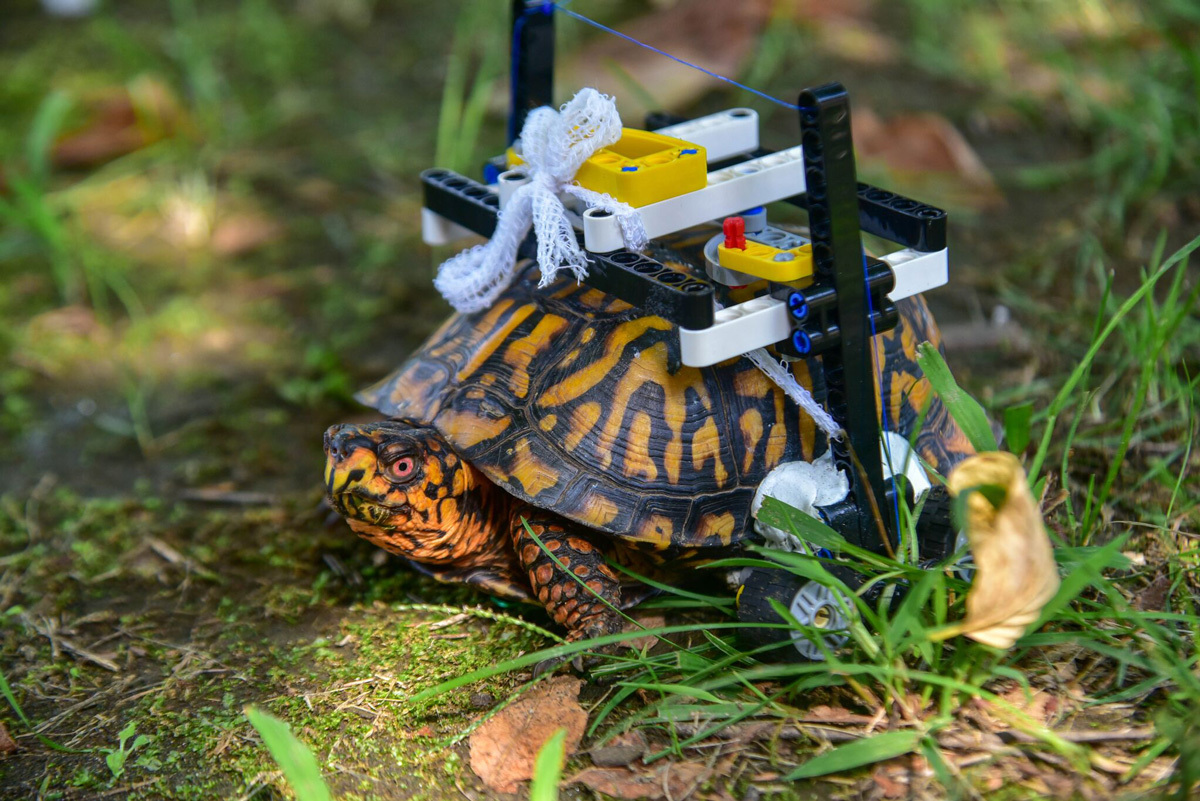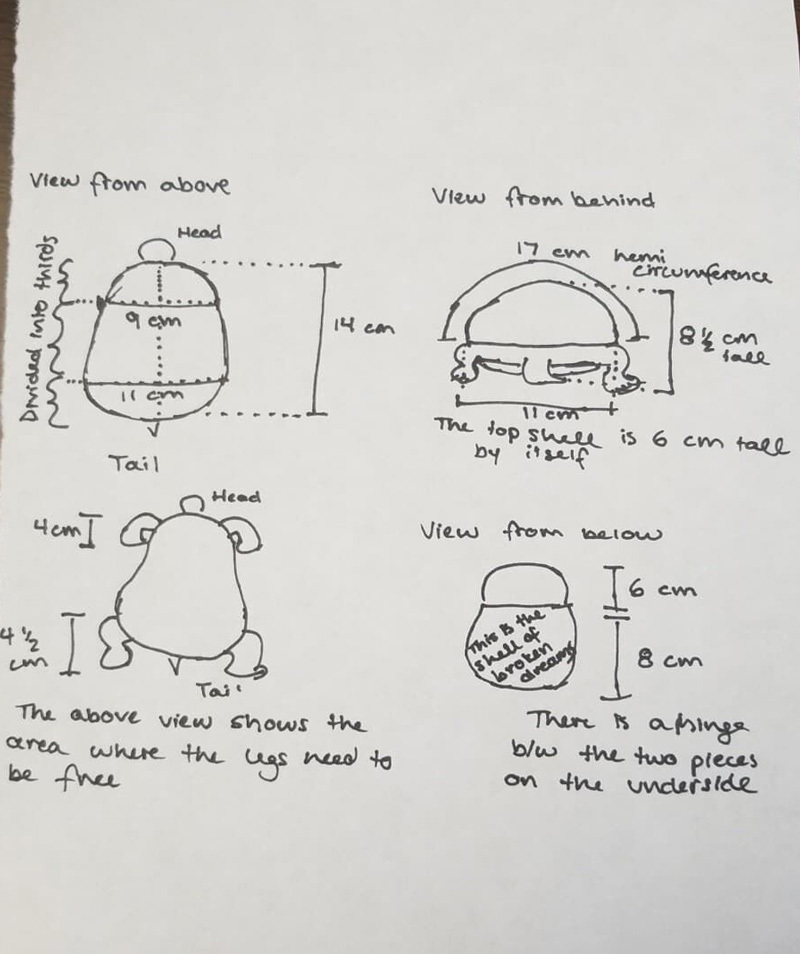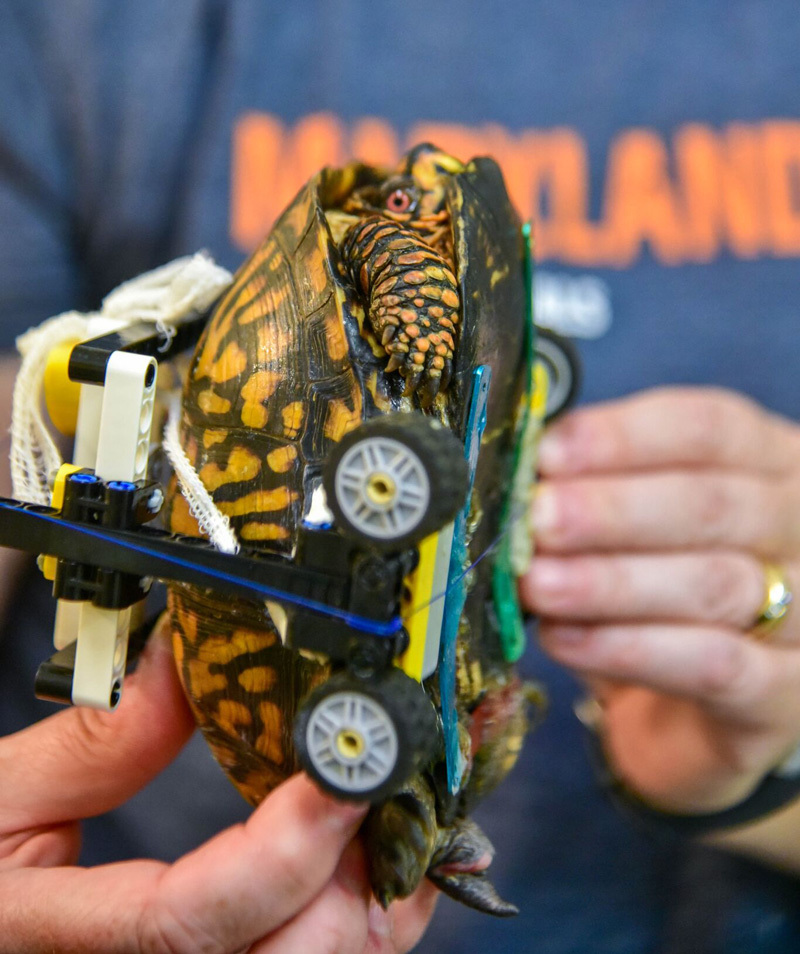
We’ve seen cars, life-sized human replicas, and even houses built out of Lego blocks. But a turtle at the Maryland Zoo in Baltimore has a one-of-a-kind Lego creation to help get him moving again.
When a zoo employee brought an injured wild Eastern box turtle to the zoo for treatment in July, the diagnosis was bleak. He suffered from multiple fractures on his plastron, or the bottom of his shell, which posed an obstacle for Dr. Ellen Bronson, senior director of animal health, conservation, and research at the zoo.
“We’re pretty sure the injuries were caused by a vehicle, it happens frequently in the city,” she said. “The bottom of his shell was in seven different fragments—it was kind of like putting a puzzle together. Because of the unique placement of the fractures, we faced a difficult challenge with maintaining his mobility while allowing him to heal properly.”
After performing an hour-long surgery to stabilize the turtle’s shell using metal bone plates, sewing clasps, and surgical wire to hold it all together, the team needed to figure out how to keep him mobile without damaging the shell.
“It was important to keep the bottom of the shell off the ground so it could heal properly,” Bronson explained. “We had to make something that wouldn’t be attached to the bottom, but that could keep him mobile. As zoo and wildlife vets, we are faced with challenges that people have never seen before so we have to come up with creative ways to treat the animals.”
Garrett Fraess, a fourth-year veterinary student working at the zoo, was up to the task. Thinking outside of the box, he drew up some sketches for a tiny wheelchair, measured the turtle (who is the size of a grapefruit), and sent them to a friend in Denmark who is a “Lego enthusiast.”


From those sketches came a multi-colored, turtle-sized wheelchair made from Lego bricks and Plumbers putty. The unique design features a frame that surrounds his shell with four Lego wheels to help get around using his front legs. The design also allows for natural behaviors, like retreating into his shell when feeling threatened.
“The minute we put it on, he was much more mobile and brighter,” Bronson said. “He’s been moving ever since.”
Because turtles have a slower metabolism than most mammals and birds, it takes them longer to heal. Dr. Bronson says that the nameless turtle will likely be using his custom wheelchair through the winter into early spring.
The zoo has been leading a Druid Hill park Eastern box turtle monitoring program since 1996 where, to date, more than 130 wild turtles have recorded, tagged, and released back into the wild (hence not naming them). These specific types of turtles can be seen in the zoo’s Maryland Wilderness area.
“This particular turtle was originally tagged in 2000, making him at least 18 years old,” Bronson said. “We are very happy that he is recovering well from his injuries and we plan to return him to the wild once he is fully healed.”
